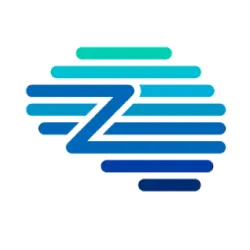Every procurement technology decision comes down to a fundamental choice: do you add another tool to your existing stack, or do you invest in capabilities built into your core platform? With autonomous sourcing, this architectural decision will determine whether you achieve sustainable automation or create another integration headache that compounds complexity while delivering limited value.
TL;DR
- Built-in autonomous sourcing delivers seamless integration across the entire Source-to-Pay process, reducing manual work and data silos.
- Bolt-on tools introduce complexity—fragmented data, higher IT overhead, and inconsistent user experiences that limit automation ROI.
- Native platforms offer a unified data model, enabling real-time synchronization, consistent policy enforcement, and accurate reporting.
- Zycus’ iSaaS model provides integration without complexity, with pre-built connectors and secure, scalable data exchange.
- Built-in sourcing ensures scalability, security, and performance—while bolt-on systems struggle with maintenance and error-prone handoffs.
- Choosing built-in autonomous sourcing future-proofs your architecture, supporting AI, analytics, and strategic procurement at scale.
The Bolt-On Trap: Why Point Solutions Fall Short
The Promise vs. Reality
Point solutions enter the market with appealing promises: quick implementation, focused functionality, and immediate value. They demonstrate well in controlled environments and often win initial enthusiasm from users frustrated with existing limitations. But the reality of enterprise deployment tells a different story.
The Integration Challenge
- Data synchronization becomes a constant struggle
- System maintenance multiplies across multiple vendors
- User experience fragments across different interfaces
- Performance optimization becomes nearly impossible
The Hidden Costs
- IT overhead increases with each additional system
- Data quality deteriorates across integration points
- User training requirements multiply
- Vendor management complexity grows exponentially
Real-World Integration Complexity
Consider a typical enterprise procurement stack with bolt-on autonomous sourcing:
The Data Journey Problem
- Business user submits request in autonomous tool
- Tool queries ERP for budget availability (if integration exists)
- User manually enters supplier information (if no supplier database integration)
- Autonomous tool generates purchase order
- PO must be manually entered into ERP for payment processing
- Invoice matching requires manual reconciliation
- Reporting combines data from multiple sources with inevitable inconsistencies
Each handoff introduces delay, error potential, and manual effort that undermines the automation promise.
The Built-In Advantage: Native Integration Architecture
Understanding True Integration
Built-in autonomous sourcing capabilities operate as native components of the Source-to-Pay platform, sharing data architecture, user management, and business logic. This isn’t just about API connections—it’s about unified intelligence.
Unified Data Model
- Single source of truth for all procurement data
- Real-time synchronization without integration delays
- Consistent data definitions across all processes
- Comprehensive audit trails that span the entire transaction lifecycle
Seamless Process Flow
- Intake to order happens in one system with one login
- Policy enforcement operates consistently across all touchpoints
- Supplier management integrates with negotiation and performance tracking
- Financial integration eliminates manual data entry and reconciliation
The Zycus iSaaS Model: Integration Without Complexity
Integration-as-a-Service (iSaaS) represents a fundamentally different approach to the integration challenge. Rather than forcing customers to manage complex technical integrations, iSaaS provides managed connectivity that combines the benefits of built-in capabilities with the flexibility of cloud deployment.
Key iSaaS Advantages
- Pre-built connectors for major ERP and P2P platforms
- Managed transformation services that handle data mapping
- Real-time synchronization with guaranteed performance levels
- Professional support that eliminates IT burden
Technical Specifications
- Bi-directional data exchange with source and destination systems
- Multiple protocol support: REST APIs, SFTP, AS2, web services
- Enterprise-grade security: 2048-bit SSL, OAuth 2.0, AES 256-bit encryption
- Comprehensive monitoring with automated error detection and resolution
Architectural Patterns That Work vs. Patterns That Don’t
The Fragmented Architecture Anti-Pattern
Characteristics of Failed Implementations
- Multiple vendor relationships with conflicting roadmaps
- Integration complexity that consumes IT resources
- Data quality issues that undermine decision-making
- User experience fragmentation that reduces adoption
Why Point Solutions Struggle
- Limited context about broader procurement processes
- Narrow optimization that creates bottlenecks elsewhere
- Vendor-specific data formats that create lock-in
- Shallow integration that requires manual intervention
The Unified Platform Success Pattern
Characteristics of Successful Implementations
- Single vendor accountability for end-to-end process
- Native functionality that shares common architecture
- Comprehensive data model that supports all decisions
- Consistent user experience across all touchpoints
Built-In Benefits in Practice
- Policy consistency enforced across intake, sourcing, and procurement
- Supplier intelligence shared between negotiation and performance management
- Financial integration that eliminates reconciliation effort
- Advanced analytics based on complete transaction data
The Technical Reality: What Built-In Actually Means
Data Architecture Fundamentals
Shared Data Models Built-in autonomous sourcing operates on the same data architecture as core procurement functions:
- Supplier master data synchronizes automatically
- Contract terms inform negotiation parameters
- Historical performance guides supplier selection
- Budget information validates requests in real-time
Event-Driven Processing
- Intake triggers automatically initiate appropriate sourcing workflows
- Approval events cascade through integrated systems
- Performance data updates supplier scores continuously
- Exception handling escalates issues through unified workflows
Security and Compliance Integration
Unified Security Framework
- Single sign-on across all procurement functions
- Consistent access controls based on role and responsibility
- Unified audit trails that track complete transaction history
- Compliance frameworks applied consistently across all processes
Data Governance Benefits
- Consistent data quality standards across all functions
- Centralized backup and recovery procedures
- Unified retention policies for regulatory compliance
- Comprehensive monitoring of all system activities
Performance Implications: Built-In vs. Bolt-On
Speed and Reliability Differences
Response Time Comparison
- Built-in systems: Sub-second response for most queries
- Bolt-on systems: 2-5 second delays for integrated data requests
- Complex transactions: Built-in maintains performance; bolt-on degrades significantly
System Reliability
- Built-in failure modes: Graceful degradation with consistent user experience
- Bolt-on failure modes: Integration points become single points of failure
- Recovery procedures: Built-in systems restore completely; bolt-on requires multiple system coordination
Scalability Considerations
Volume Handling
- Built-in systems: Scale horizontally with shared infrastructure
- Bolt-on systems: Limited by integration capacity and synchronization overhead
- Performance optimization: Built-in benefits from unified optimization; bolt-on suffers from integration bottlenecks
Feature Enhancement
- Built-in development: New capabilities leverage existing infrastructure
- Bolt-on limitations: Feature additions require integration rework
- Innovation speed: Built-in platforms iterate faster with less technical debt
The Business Case for Architectural Choice
Total Cost of Ownership Analysis
Built-In TCO Components
- Platform licensing: Single vendor, unified pricing
- Implementation: One integration project with comprehensive coverage
- Maintenance: Unified support and system management
- Upgrades: Coordinated releases with tested compatibility
Read more: The Evolution of Intake Management: From Bolt-On to Built-In
Bolt-On TCO Reality
- Multiple licenses: Separate pricing for each point solution
- Integration projects: Multiple implementations with ongoing maintenance
- System management: Distributed support across vendors
- Upgrade complexity: Coordinating multiple systems with dependency management
Risk Assessment Framework
Built-In Risk Profile
- Vendor dependence: Single relationship with comprehensive capabilities
- Technology risk: Unified platform with consistent architecture
- Integration risk: Minimal external dependencies
- Performance risk: Predictable scaling and optimization
Bolt-On Risk Accumulation
- Vendor proliferation: Multiple relationships with potential conflicts
- Technical complexity: Integration dependencies and failure modes
- Performance uncertainty: Unpredictable bottlenecks and scalability limits
- Maintenance burden: Ongoing integration management and troubleshooting
Implementation Strategy: Building for Success
Platform Selection Criteria
Architectural Assessment Questions
- How deeply integrated are autonomous sourcing capabilities with core S2P functions?
- What data models are shared between different platform components?
- How are security and compliance frameworks unified across the platform?
- What happens when one component needs updating or maintenance?
Integration Depth Evaluation
- Surface integration: API calls for basic data exchange
- Process integration: Shared workflows and business logic
- Data integration: Unified data models and real-time synchronization
- Experience integration: Seamless user interface across all functions
Migration Planning for Built-In Solutions
Current State Assessment
- Existing system inventory and integration complexity
- Data quality evaluation across current platforms
- User workflow analysis and training requirements
- Business continuity planning during transition
Implementation Approach
- Phased migration that minimizes business disruption
- Data consolidation strategy for comprehensive integration
- User training programs for unified platform adoption
- Performance monitoring throughout implementation and optimization
Common Misconceptions About Platform Integration
“Best-of-Breed vs. Suite” False Dichotomy
The Reality of Modern Platforms
- Modular architecture allows selective implementation
- Open APIs enable complementary tool integration
- Vendor partnerships provide specialized capabilities
- Custom development supports unique requirements
Why This Matters for Autonomous Sourcing
- Context awareness requires deep integration with procurement data
- Policy enforcement needs consistent application across all touchpoints
- Performance optimization depends on comprehensive analytics
- User experience benefits from unified interface design
“Integration is Easy” Technology Myth
The Hidden Complexity
- Data mapping across different system architectures
- Error handling when integration points fail
- Performance optimization across system boundaries
- Security coordination across multiple platforms
Why Built-In Wins
- Shared architecture eliminates mapping complexity
- Unified error handling provides consistent user experience
- Performance optimization benefits entire platform
- Security by design prevents coordination issues
Future-Proofing Your Architecture
Technology Evolution Considerations
AI and Machine Learning Integration
- Built-in platforms: ML models benefit from comprehensive data access
- Bolt-on solutions: Limited data access constrains AI effectiveness
- Innovation speed: Built-in platforms can iterate faster with unified data models
Emerging Technology Adoption
- IoT integration: Built-in platforms provide unified device management
- Blockchain capabilities: Native integration with existing security frameworks
- Advanced analytics: Comprehensive data access enables sophisticated modeling
Vendor Strategy Alignment
Platform Vendor Benefits
- Unified roadmap that coordinates feature development
- Comprehensive testing across integrated components
- Customer success programs that optimize entire platform value
- Strategic partnership that aligns with business goals
Point Solution Vendor Limitations
- Narrow focus that may conflict with broader platform evolution
- Integration dependence on vendor cooperation for updates
- Feature conflicts when point solutions optimize for different objectives
- Support complexity when issues span multiple vendors
Making the Architectural Decision
Evaluation Framework
Technical Assessment Criteria
- Integration depth: How seamlessly do components work together?
- Performance characteristics: How does the architecture scale under load?
- Security framework: How consistently are security controls applied?
- Upgrade complexity: How difficult is it to maintain and enhance the system?
Business Value Assessment
- Implementation speed: How quickly can value be realized?
- User adoption: How easy is the system to learn and use?
- Operational efficiency: How much manual effort does the system eliminate?
- Strategic capability: How well does the system support business growth?
Decision Matrix Framework
Built-In Advantages
- Unified user experience across all procurement functions
- Comprehensive data model supporting advanced analytics
- Simplified vendor management with single relationship
- Predictable upgrade path with tested compatibility
Bolt-On Considerations
- Specialized functionality that may excel in narrow areas
- Faster initial deployment for limited use cases
- Lower initial cost before integration complexity emerges
- Vendor diversification that reduces dependence risk
Conclusion
The choice between bolt-on and built-in autonomous sourcing isn’t just a technological decision, it’s a strategic choice that will determine your procurement organization’s capability for years to come. While bolt-on solutions may appear attractive for their speed and focused functionality, the architectural reality is that sustainable automation requires deep integration that only built-in platforms can provide.
Explore Zycus’ Autonomous Negotiation Agent
Organizations that choose built-in solutions benefit from unified data models, seamless user experiences, and comprehensive functionality that evolves together. Those that choose bolt-on approaches often find themselves managing increasing complexity that ultimately undermines the automation benefits they sought to achieve.
The question isn’t whether integration matters; it’s whether you want that integration to be your competitive advantage or your technical debt. In autonomous sourcing, architecture isn’t just about how systems connect; it’s about how effectively your procurement organization can respond to business needs at the speed and scale that modern markets demand.
Related Reads:
- Source to Pay Software Powered by AI
- Agentic AI for Global Sourcing
- The Impact of Agentic AI on Source-to-Pay
- Beyond Dashboards: Why Visibility Alone Is Not Strategy
- What Makes an Autonomous Negotiation Agent Truly Intelligent?
- Intelligent Intake is the Gateway to Autonomous Negotiation
- The Hidden Cost of Tail Spend: Why Manual Negotiation Doesn’t Scale
- How to Write an Effective RFP for Autonomous Sourcing
- The Autonomous Sourcing Maturity Model: Where Do You Stand?











































